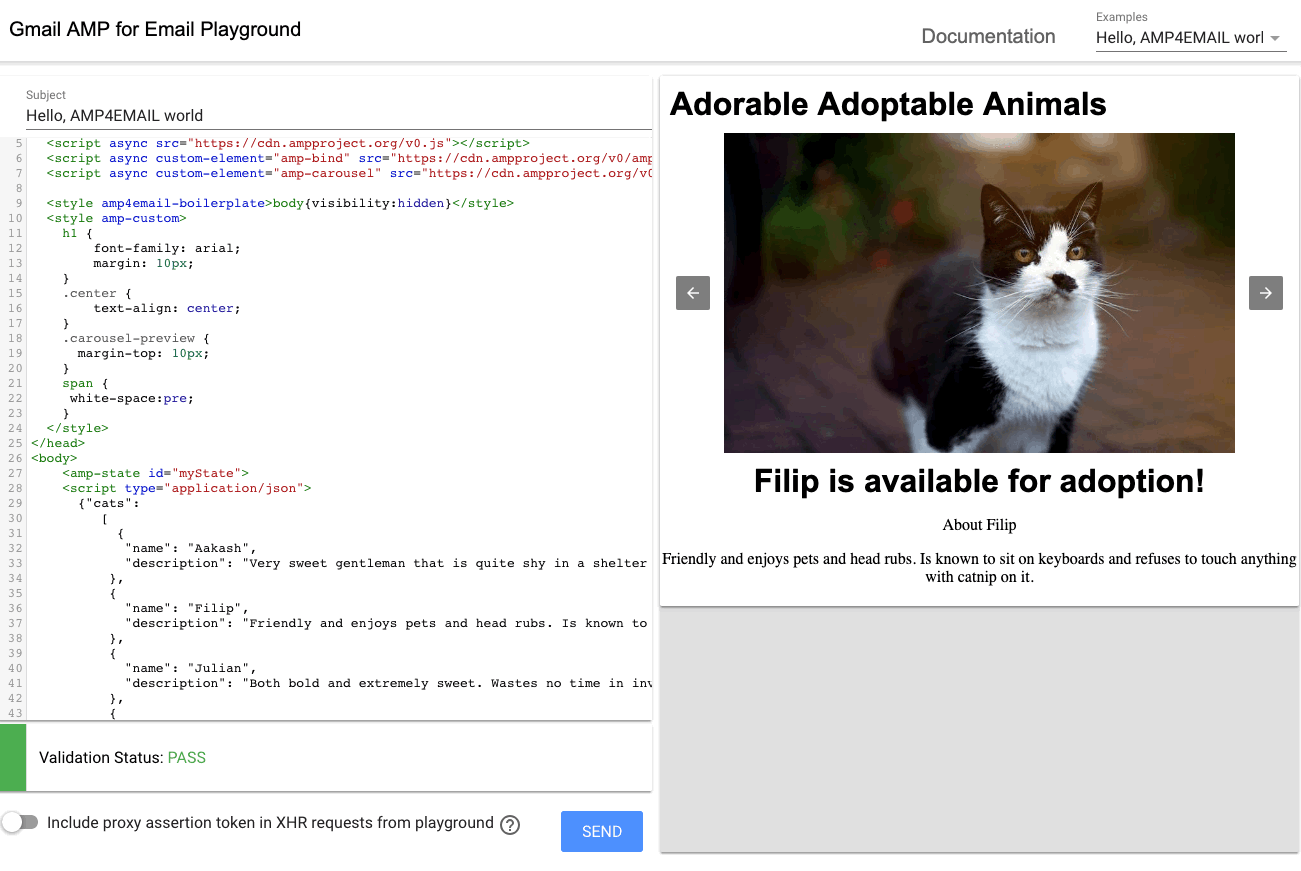Gmail rolls out AMP for Email—and Litmus, Outlook.com, SparkPost + other leading email brands announce AMP support
Email geeks, get ready to see more interactive emails in your Gmail inboxes. Today Gmail announced that support for AMP for Email is beginning to roll out to Gmail’s desktop email clients, with support for Gmail’s mobile apps following soon.
We’re excited to announce that we’ve partnered with Gmail to bring support for AMP in Litmus Email Previews for Gmail and G Suite, allowing email marketers to see how their AMP emails render in subscribers’ inboxes. This is a big step in helping marketers develop interactive emails, and we’re excited to continue to invest in and be at the forefront of providing better subscriber experiences.
AMP for Email is a major step towards making the inbox more engaging and interactive. We’re excited to support AMP in Litmus Email Previews, and will continue to provide email marketers with the tools they need to stay at the forefront of email innovation.
John Billington, Principal Product Manager at Litmus
What’s AMP for Email?
In February 2018, Google announced that support for AMP—an open-source technology designed to improve the performance of web content—would be coming to Gmail, providing marketers with the opportunity to add AMP-powered interactivity to their emails by using a separate MIME-type.
So far, AMP for Email has only been available through a developer preview that allowed a selected number of brands to start building and testing their emails using AMP. Now, Gmail subscribers will actually be able to view AMP emails in their inboxes. Starting today, if brands want to send emails that include an AMP version, they can get started using the developer documentation and register with Gmail. Once your registration is approved, you will be able to send AMP emails to your subscribers.
AMP for Email support is also coming to Yahoo! Mail, Outlook.com, and Mail.ru
While AMP for Email is beginning to roll out in Gmail today, it’s not the only inbox provider that’s supporting it. AMP for Email is an open spec that other email clients can choose to adopt—and some have already announced that they will be offering support:
- Microsoft announced that they’ll offer AMP support for Outlook.com through a developer preview by summer 2019.
- Verizon Media announced that they’re working on bringing full support to Yahoo! Mail soon.
- Mail.ru will also support AMP for Email.
Can I start sending AMP powered emails, too?
Previously only available to participants of the early access program, the Playground for AMP for Email is now available to everyone, so you can create and edit markup and see real-time changes to your email. The developer documentation for AMP for Email provides useful insights on how to get started building your first AMP email.
The AMP for Email playground tool has a built-in validator. If your email markup is valid AMP, it will allow you to send yourself a test email to your own inbox.

To be able to send AMP emails not only to yourself but to a list of subscribers, you’ll have to make sure that you’re registered with Google as a sender of dynamic email. Plus, you’ll need access to an email service provider that offers support for sending AMP emails. Once registered, you can preview your AMP email by sending into your Litmus account and viewing Gmail desktop.
What email clients support AMP for Email?
Creating interactive emails using AMP for Email is different from creating an HTML email. AMP for Email requires a third, separate MIME-type: text-x-amphtml.
Email marketers already use two different MIME types to create emails for the HTML part (text/html) and plain-text part (text/plain) of an email. This is why, in your ESP, you have to create an HTML version and a plain-text version of every email you send.
For AMP-powered emails, you’ll have to add a third MIME-type to your email. And that’s only possible if your email service provider (ESP) offers support for it. The following ESPs have announced support for AMP for Email, enabling their users to send more interactive emails using AMP:
- SparkPost
- Twilio Sendgrid
- Amazon SES and Amazon Pinpoint
Preview your AMP-powered emails with Litmus
We’re excited to announce that you’ll soon be able to preview your AMP emails in Litmus. If you’re testing an email that includes AMP, Litmus Email Previews will show you exactly what your subscribers will see in Gmail: the AMP version of your email.
Today, Gmail is rolling out support for AMP for Email to users, making emails more useful and interactive. In partnership with the ecosystem of email senders, service providers, and platforms–including companies like Litmus–we’re excited to be building the future of email.
Aakash Sahney, Product Manager at Google
AMP for Email is supported in Litmus Email Previews for Gmail and G Suite and will be available to all Litmus customers once Gmail has completed its rollout to all Gmail inboxes.
For these Email Previews, Litmus will display the first frame of the AMP email, but not subsequent states of interactivity. This will help AMP for Email senders ensure that the default open state of the email is working in Gmail.
Learn more about Litmus Email Previews →

Bettina Specht
Bettina Specht was the Senior Content & Lifecycle Campaigns Manager at Litmus
